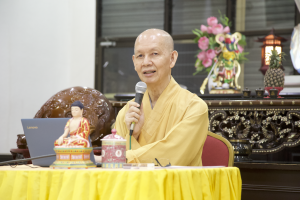
What you pay attention to—what you rest your mind on—is the primary shaper of your brain.
Rick Hanson
While preparing for teaching a course on the subject of “Taking in the Good,” I was sitting in the rain shelter of our allotment counting my blessings: being in a creative and loving long-term relationship, easy access to relatively wild nature at this garden plot by the river, the ability to make a sufficient living by doing things that I love doing; being free of any immediately life-threatening illness, living in a country where I can freely express my beliefs, and so on. How did it feel, bringing these things to mind? I was investigating, as I would encourage my students to also do, how this actually works, this “Taking in the Good,” and whether deliberately cultivating gratitude was indeed a good strategy toward that aim.
The theory is that by consciously noticing any positive experiences and then making them last, by dwelling on them, “mental states become neural traits” as neuropsychologist Rick Hanson says. (Hanson, 10) You can actively and purposefully reshape your brain, building resilience, inner strength, and a sense of agency and self-worth—meaning that you can actually do something to enhance your well-being and that you matter enough to engage in such pursuits—and in the process, you develop the ability to pay prolonged attention, training yourself in mindfulness. This all sounds very appealing, but how does one actually go about this assignment of taking note of a positive experience and then prolonging it? Usually, that’s not what we do, is it? We encounter something pleasant, give it a perfunctory nod of recognition, and then swiftly—and usually involuntarily—move on to more pressing, and possibly threatening, issues. We are in the grip of the hardwired “negativity bias” of our brains, which has evolved to be like Teflon for positive experiences and Velcro for negative ones. We have no difficulty making unpleasant experiences last—we are experts at surrendering to them, letting them go round and round in our minds, imagining future catastrophes, and rehearsing past disasters.
The first thing I noticed was that I had to slow down. Just making a list in my head of the usual things I feel grateful for—it’s of course not the first time I am doing this—didn’t really shift anything in any noticeable way. The more I applied myself to this exploration of “Taking in the Good,” the more it seemed to be primarily about taking in what was good right here and now: the low winter sun in my face, a long fluffy coat keeping most of my body warm, a thermos cup of cinnamon-and-ginger-flavored tea in my hands, my breath flowing easily in and out, and nothing alarming happening in the immediate vicinity of the frost-laced vegetable and flower beds I was overlooking. I was feeling a sense of quite ordinary wellness in an immediate, sensory way, and the awareness of breathing—as a visceral experience—seemed to be central to allowing me to linger over it. The breath was like a gentle wind spreading the feeling of well-being through my whole body. Nurturing this image made it relatively easy for awareness to stay tethered to the breath for a few moments and let the experience of wellness embed itself in my being. I experimented with different similes to see whether they would equally stabilize the experience—letting it be like a warm, scented bath to soak in worked well for me. I found that by dropping in just a single evocative verb, such as “suffuse,” “saturate,” or “permeate,” I could sense a corresponding reverberation in the energetic field, a filling up with more and more relaxation and buoyancy.
If what I was doing here was cultivating the art of present-moment appreciation, I was curious how that related to gratitude. Imagine that you received a kind email from a friend. Bringing that moment back into awareness will have an effect—perhaps a brightening or warming in the heart area and you may start to smile. You revel in the good feeling of being seen and loved for a moment longer, sensing it percolating—another suggestive word—through your system. As you consciously re-live it, it actually becomes a present-moment experience that reshapes your body and mind. If you then introduce the idea of gratitude, maybe thinking about how lucky you are to have such a friend, something else is likely to happen—a deepening of the pleasure and a redirecting of your energy outward. There is a receptive opening toward a field of interconnectedness that imbues your life with richness, the very opposite of poverty mentality.

On the way home from the allotment, I stopped on the bridge over the River Kelvin, alerted by the movements of a big bird a little further upstream. A grey heron slowly striding through the current, only half its long legs visible, then coming to rest on a boulder, assuming its customary, elegant watch position. Two young guys ambled by, engaged in conversation and bent over a phone. “Did you see the heron,” I opened up a dialogue. “Aye, usually it’s further down,” one of them replied. All three of us turned toward the bird. “So still . . . “ I offered and we stood there without speaking, four beings in perfect harmony, savouring the silence for a few breaths.
I am pretty sure that my exploration of gratitude at the allotment contributed to me feeling more open to humanity and inclined to take the—small—risk of connecting with strangers. This fleeting heron incident, so easy to forget, became part of my response when my husband asked me in the evening what I was grateful for. We do that regularly and I think it’s making a big difference to our emotional well-being and resilience, as well as being a great way to stay in touch with what’s been happening in our lives. And it’s a great practice to do on your own as well, making you feel less lonely. Whether you write down some “gratitudes” in a journal, or do a meditation practice like the “10 finger gratitude practice,”* where you hold a finger while contemplating a positive experience, slow down and relish the detail of it, go over what happened, consider what is the best part of it, what needs of yours were met, and marinade in those positive qualities, like feeling loved, to matter, to feel safe and satisfied. And just in case, you also have some parts in you that object to such frivolities when so much needs doing, or doubt that you are worthy of it, look out for next month’s installment, which will explore how we can include such inner voices.
References
Hanson, Rick. 2013. Hardwiring Happiness: The Practical Science of Reshaping Your Brain and Your Life. New York: Harmony.
See more
10 finger gratitude practice (YouTube)
Related features from BDG
Fostering Peace through the Won Buddhist Contemplative Practice of Diary Writing
Gratitude
Gratitude Is Being Taken for Granted
You’re Not Not: Delighting in the Joy of Being by Opening to Existential Gratitude
Practicing Gratitude When the Sh*t Hits the Fan: Plutarch and the Practice of Blending












